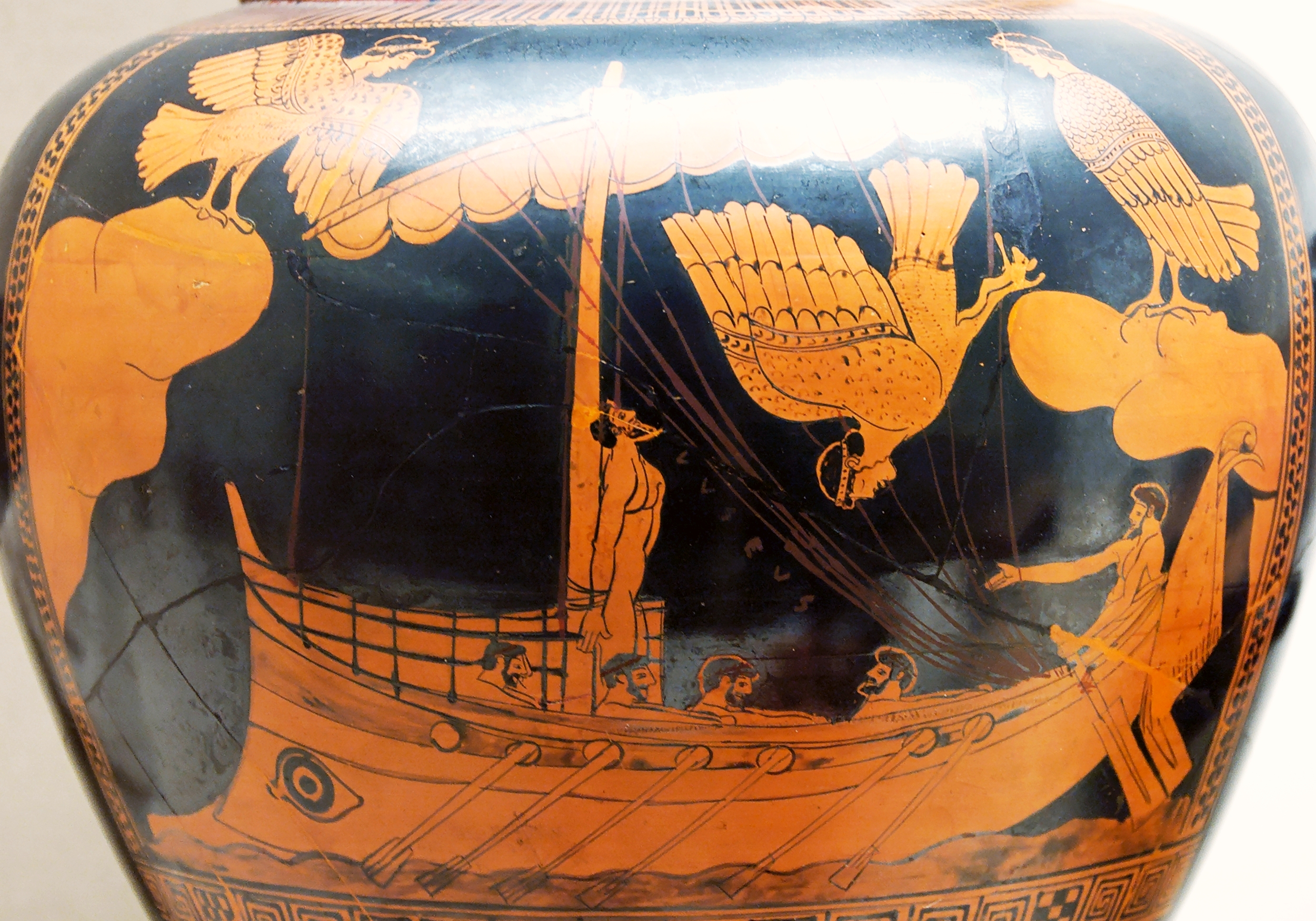That's a siren for you: a reversed muse, a degenerate mermaid, a harpy with a harp. C'mon, the harpy with a harp part is funny.
To begin with, the sirens looked like harpies: half women – half bird, with claws and wings. And even if the bird used to manufacture a siren was just a common and humble sparrow, they were by no means less threatening: the sirens' song drew sailors to their island like a magnet. The island was surrounded by sharp rocks, which tore boats apart, leaving the shipwrecked sailors to die on the sirens' island. The entire island was covered with the white bones of those unfortunate sailors, and the sirens used those bones to make musical instruments. Gruesome. Though it's not clear who ever managed to get so close to the island to get this accurate description.
 |
| A random muse |
The sirens were descendents of the muses, daughters of either of Melpomene (who was initially muse of song, before becoming the muse of tragedy) or Terpsichore, the muse of dancing. Initially fair maidens who accompanied Persephone, they were transformed into bird-women and received their wings after Hades kidnapped Persephone, so that they could fly and find her faster. Others say that they got the feathers as punishment, because they weren't able to protect Persephone. And there are even some who claim that they were punished by Aphrodite, because they despised the pleasures of love and swore to remain maidens forever (but, seriously, we're too eager to blame Aphrodite for everything).
 |
| More random mermaids |
Because of their association with Persephone, queen of the Underworld, the sirens are sometimes considered the muses from below, offering inspiration to the damned and leading souls astray. Despite their association with sailors, sirens are not aquatic deities, even if they'll soon end up in a fishy form. See, they were so proud of their singing skills, which lured humans into their deadly trap, that they though they could challenge the muses to a duel. The scene is depicted on a Roman sarcophagus currently at the Metropolitan Museum of Art. (Sirens are often found in funeral art, because they're all-knowing creatures, like the sphinx, and thus they can help humans find their way in the world of the dead. Or because winged creatures look sort of cool.)
Needless to say, the sirens lost. So the muses plucked their feathers as punishment. No longer able to fly, the sirens adjusted and developed a fish tail, so that they could move at least in the water. Hence their association with mermaids. But sirens are not aquatic deities. For reasons that I fail to remember right now, it's important to keep that in mind.
 |
| Odysseus and Sirens. Image PD |
The sirens could live only until a man heard their song and survived. The lucky one was Odysseus, returning from Troy, who tied himself to his ship mast, and thus heard the sirens' song, but could not follow them to their island of doom. (The Argonauts also passed safely by the sirens, but that's only because they had Orpheus aboard, who rocked way louder, so they couldn't hear a thing. So that doesn't count.)
So after that, the sirens killed themselves. The end.
Sirens were slightly resurrected during the Middle Ages, and popped up in various more or less documented writings. A certain Jesuit scholar wrote that women have “the glance of a basilisk and the voice of a siren – sight and voice together bringing voice and destruction”. Told you we should stop blaming Aphrodite for everything.




